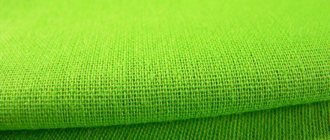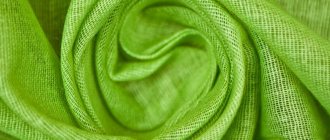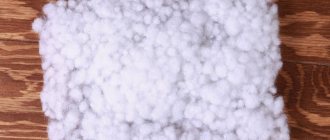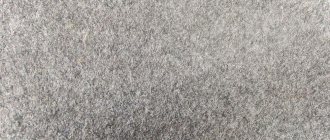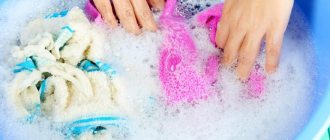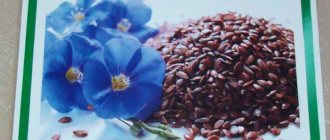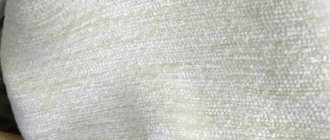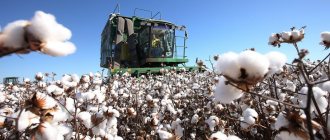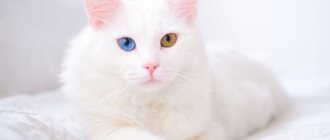home / articles / Goat wool - properties and applications
Goat wool has a uniform, smooth texture, so products made from it are very pleasant to the body. It is also characterized by a large margin of strength and elasticity; products made from this material last for many years without losing their original qualities. The most famous and sought-after goat breeds, whose wool is used in light industry:
- Angora - yarn made from its wool is called mohair;
- Orenburg - it is from this raw material that the famous Orenburg down scarves are produced;
- Cashmere - gives the most delicate fluff, from which thin and soft, but at the same time very warm cashmere is produced.
Raw materials and production technology
Goat wool is obtained by shearing. Then it is carefully processed in several ways, only after these manipulations will it be possible to knit or sew something from the material.
Appearance of the animal
Stages of wool processing:
- Animal grooming.
- Sorting of raw materials.
- Lint cleaning.
- Flushing.
- Drying.
- Combing hair.
- Yarn.
The purpose of this processing is to clean the fur from debris and dust. First, high-quality hairs are separated from defective ones, after which fundamental cleaning begins. The most difficult stage is separating all kinds of garbage. The more carefully it is produced, the better the quality of raw material for yarn.
Grooming a goat
After cleaning, the wool must be washed. This is done in order to remove any remaining goat sweat and fat from the hairs. In addition, after washing the fur becomes softer.
Wool after washing
Drying is an important processing step. The main thing here is to dry every lint. This is done as follows:
- The raw materials are laid out on a special mesh in an evenly thin layer.
- Stir lightly if necessary.
This allows the wool to dry as much as possible. Due to the cross-section of the mesh, it is not only dried, but also ventilated.
Drying goat hair
During washing, the fibers become very tangled with each other, so the next step is combing. The procedure can be performed in two ways:
- carded using a brush with female metal bristly teeth;
- with a regular comb.
Combing is carried out until a homogeneous hairy substance is obtained from the fur ball.
Combing with card method
The detergent used in fur washing is washing powders intended for washing wool and other similar raw materials. After washing, the lint needs to be rinsed several times in a row.
Secrets of angora production
Before producing premium wool fabrics, the initial task is to collect the down of Angora rabbits. About three times a year, factory workers engage in shearing or plucking animals. The latter method is done by hand and is suitable for wool between 7 and 12 cm in length. However, some countries have abandoned plucking, claiming that it is inhumane to rabbits. A slightly simpler method is the process of collecting the shedding, however, in this case, unwanted plant fibers may get into the wool. To prevent deterioration in the quality of the down, rabbits must be brushed regularly, at least twice a week. This procedure helps keep the fur silky and does not allow the fluff to mat, which would be appropriate for non-woven felt material, and not for angora. On average, each rabbit produces about 300 grams of silky and weightless fluff per year.
The “prestige” of the future angora fabric varies depending on where on the rabbit’s body the wool is taken. For high-quality linens, you need down from the top and back of the rabbit, which is often longer and cleaner than the down from other areas. The neck and underside are suitable for collecting second-class wool, in which plant debris is often found. The shortest hair from the legs and buttocks is considered third-class. Grade 4 wool is generally considered unsuitable for making angora yarn.
Combing goat hair and fluff
This is a labor-intensive process. It is carried out twice: at the beginning and at the end of molting, i.e. with an interval of 15-20 days.
The fluff is combed out with combs. These are wooden blades with long, curved teeth in the form of half rings. One comb has a distance between teeth of 1-1.5 cm, the second - 0.5 cm. The first is used for preliminary combing of braids, freeing the wool from debris and other impurities; the second is for combing out fluff.
Experienced goat breeders recommend collecting fluff from goats under the age of 6-7 years, because later the quality of the raw material drops sharply. After the initial combing, the goat is given some respite, and after a week or two the procedure is repeated, removing the remaining fluff.
Animals are not fed or watered 10-12 hours before grooming. The coat must be dry and clean. In a bright room, the floor is covered with tarpaulin, a rack 0.5 m high and 1-1.5 m wide is equipped. The animals are placed on their sides, two front and one hind legs are tied. First, the comber works with a thin comb, and then proceeds directly to combing out the fluff.
The comb is led from the back to the belly, without putting much pressure on it. As fluff accumulates on the comb, the carder puts it in a bag. They comb the other side in the same way, then carefully remove the fluff on the belly. At the end of the grooming, the animal’s legs are untied, carefully removed from the flooring and taken into the pen. The last to be treated are the uterine uteruses and do it very carefully.
We invite you to familiarize yourself with the St. Petersburg Sphynx description of the breed, character and characteristics of caring for the animal
The resulting fluff, after repeated combing, cleaning and washing, is used to make down thread.
To produce even, high-quality yarn, not only the thickness of the fluff is important, but also its uniformity in thickness.
Popular Wool Goat Breeds
- Angora is the oldest, wool yield is up to 70%.
- British Angora – considered a new breed since the 80s.
- Soviet wool.
- Tajik and Uzbek are intrabreed types of Soviet wool goats (wool is semi-fine), wool yield is up to 80%.
- Tuvinian - obtained by crossing: Tuvan, Angora, Soviet wool.
There are 300 breeds and types of goats. Can be roughly divided into 3 categories:
- Downy - Orenburg (the thinnest in the world - thickness - 17-18 microns. Gray, dark gray, black (sometimes red, motley, rarely white) breeds of goats are bred.
- Rough-wooled (graze on scanty and steep rocky pastures inaccessible to sheep).
- Woolen.
Classification and characteristics by breed of animals
In terms of value, goat wool ranks second after sheep wool.
Depending on the breed of animal, wool is divided into semi-coarse and coarse. Semi-rough, in turn, is divided into homogeneous and heterogeneous.
Down, depending on the name of the breed, is divided into Orenburg, downy and Angora-coarse-haired.
- The wool of Angora goats is uniform, its fibers have low cohesion, which reduces its spinning qualities.
- The wool of the Soviet wool breed of goats differs little in composition from the Angora, but contains more fluff, mostly coarse, which in properties is closer to transitional hair. This explains the higher spinning capacity.
- Orenburg down is a raw material obtained from goats of the Orenburg breed. The down is characterized by a uniform color; it is thin, soft, elastic, and silky.
The raw materials obtained from downy goats (Gorno-Altai, Don and other breeds) are characterized by less softness and elasticity compared to the Orenburg goats.
The fluff obtained from crosses of Angora and coarse-haired goat breeds is distinguished by its long length, silky shine, and contains fine hair.
Goat fluff is divided into normal and trash. Normal down contains up to 1-1.5% of various foreign matter and dandruff, while weed fluff contains more than 1.5% of foreign matter and dandruff. The presence of heavily matted lumps in the raw material is unacceptable.
The color varies from light grey, dark grey, dark brown, mixed and white goat down.
Goat down is divided into 4 classes
- The first class includes fluff with a guard hair content of up to 10%.
- The second class includes fluff with a guard hair content of 10-20%. Second class raw materials may contain a small amount of foreign impurities, matted lumps of fluff and so-called dead hair.
- The third class includes fluff, cut or combed from goats, which contains 20-40% guard hair. In third class raw materials, the presence of a small amount of dead hair and matted lumps of fluff is allowed.
- The fourth class includes down, sheared or combed from goats, containing 40-60% guard hair. A small amount of dead hair and matted lumps of fluff are also allowed.
Uniform wool of the first group
- this is high-quality raw material obtained from Soviet wool goats and their crosses. The wool is white, luster (shiny), wavy, with a braided structure, consisting mainly of transitional fibers and a small amount of dry dead hair.
Uniform wool of the second group
- raw materials obtained from goats of the Soviet wool breed and their crosses. The wool is white and other colors, semi-luster (with a low shine), with slight waviness, braided structure, consists mainly of transitional fibers and a small amount of dry dead hair.
Heterogeneous semi-coarse wool of the first group
- raw materials obtained from crossbred goats of the Soviet wool breed. The coat is predominantly white, semi-luminous, with slight waviness, and a braided structure. Each of the braids consists of long fluff, transitional fibers and guard hairs; A small amount of dead hair is found.
We invite you to familiarize yourself with Pugs basic feeding and care
Heterogeneous semi-coarse wool of the second group
- raw materials obtained from downy goats and their crosses. The wool is predominantly gray in color, wavy, with a fluff content of at least 40% by weight, with a braided structure. Each of the braids consists of long downy and transitional fibers, often exceeding the length of the guard hair; A small amount of dead hair is found.
Irregular, coarse guard hair
- braided structure, consists of coarse guard hair, fluff content does not exceed 25% by weight; there is dead hair.
Irregular coarse semi-down coat
- braided structure, consists of coarse guard hair, fluff content does not exceed 40% by weight; there is dead hair.
Please note that heterogeneous coarse wool is not classified by color. White wool mixed with colored wool is classified as light grey. The presence of colored fibers in white wool is allowed no more than 4-5 pieces per 1 kg of unwashed raw material.
Goat breeds whose wool is in demand in industry:
- Angora. Its fur produces high-quality Angora mohair;
- Orenburg It is famous for the fact that goat fur of this particular breed is used in the production of the well-known Orenburg down scarves;
- The Kashmir goat produces very delicate fluff, which serves as a raw material in the production of warm cashmere fabrics.
Raw materials of long-haired goat breed
Goat fur is also classified according to color. Happens:
- light gray;
- color;
- pure white;
- black.
According to fur condition:
- trash - a little more than 3% of trash is allowed. Cheap type of wool, considered technical;
- normal - does not exceed 3% of garbage impurities. High-quality raw materials are expensive and are used in the production of exclusive expensive products.
Types of wool by color
By technical properties:
- homogeneous. First grade. Appearance white with a peculiar shine. Long-haired raw material, hair length reaches 10 cm. Uniform second grade is also white with a minimum content of dead fibers or lumps.
- heterogeneous. It can be semi-coarse, usually in goats of Soviet crossbreeds or goats of downy breeds, and coarse - it is found in semi-downy breeds and guard breeds.
Where and how to use goat hair
The finest goat hairs are called fluff. It has clear classification criteria. Each group differs in the length of the villi, the presence and number of guard hairs, and contamination. The main criterion for choosing the type of quality is the fineness of the hair:
- the most delicate is called cashmere (19 microns);
- slightly thicker than cashmere (23 microns);
- the thickest angora is coarse-haired (30 microns).
This is what goat down looks like.
Classification of goat down based on the percentage of guard hairs:
- 1 class. The allowed percentage of guard pile content is no more than 10%;
- 2nd grade. A small amount of foreign impurities and 10-20% guard hairs are acceptable;
- 3rd grade. This is the fluff of a combed and clipped goat, which contains 20-40% guard fur and a minimal amount of dead hair;
- 4th grade. The guard hair content here ranges from 40-60% and a small number of foreign impurities and dead hair are also allowed.
Down in goats appears closer to winter, beginning to grow in August. It is during this period that the animals are sheared.
White fluff is considered the best and, accordingly, expensive. It is easier to process and has better quality indicators compared to other types.
We invite you to familiarize yourself with Black Mollies (fish): differences between males and females, reproduction, pregnant female, diseases, keeping in a community aquarium, fry
Cleaned and ready to use white goat down
Properties of wool from woolly goat breeds
High hygroscopicity in comparison with artificial and synthetic fibers. The elasticity, elasticity, and crimp of wool affect the rollability (wool fibers are closely intertwined under the influence of chemical treatment, forming a dense mass - felt). One of the valuable properties is spinnability - the ability to produce (form) various types of yarn.
The presence of fat - the secretory activity of the goat body produces sebum (wool fat), which softens the hairs, prevents them from tangling, sweat contains salts that regulate water-salt metabolism, and prevents contamination of the fleece.
Follow-up work with combed goat down
The collected fluff needs to be sorted, combed in separate bunches, cleared of debris and hair, and at the same time leveled. This is a task for the patient: among the matted down there are straws, the remains of hay, burdock “hedgehogs”, tangles, and just dirt. You need to sort out all the lumps with your fingers, comb them with a thick two-row comb, and only then wash and degrease.
Usually they use a thick, light foam of plain soap, and then (the second time) - alkali-free baby soap. Shampoos can also be used. The most important thing is to rinse the fluff very thoroughly in soft water, perhaps with a drop of vinegar, which will neutralize any remaining soap.
Fashion trends in angora products
As you know, fashion is cyclical, so many trends return to the catwalks from the recent past. The same applies to current knitted sweaters straight from the 80s. Soft natural wool products look elegant and at the same time comfortable to wear. The question of buying or sewing that perfect fluffy sweater becomes especially acute in the autumn season with the onset of cold weather. All attention to the composition! A wool product should not only attract you visually, but also keep you warm and keep you warm on long winter evenings.
Applications of goat hair and fur
Goat and sheep wool is used on a large scale in the textile industry. Plants and factories willingly buy processed raw materials from breeders. High-quality soft goat wool fabric is used in many ways. It is made from:
- carpets with a pile surface;
- high quality Turkish sheepskin coats;
- warm house slippers.
Shoes made from goat down threads
Important! Amazingly beautiful scarves are made from fluff. Long-haired wool is used to make fur for collars, flies and other decorative elements.
Goat wool is also used in everyday life. Knitting threads are spun from it. The finished products not only look good, that is, they have an aesthetic appearance, but are also very warm. Yarn used to knit:
- children's pants;
- hats;
- vests;
- mittens;
- socks;
- sweaters.
Knitted items at home
All of them, in addition to warmth, comfort and softness, also have healing properties. Useful for people suffering from nervous disorders, pathologies of the musculoskeletal system, and circulatory problems.
For your information! The most common and best-selling products made from dyed goat wool fabrics are blankets and woolen rugs.
Down scarves
Angora varieties
The type of yarn and fabric produced depend on the breed and color of the Angora rabbit. Each variety affects the shade of wool and determines the quality and quantity of yarn. The following five types are considered the most popular: French, satin, German, giant and English. Coat shades range from lighter shades such as gray or white to darker shades such as brown and black. It’s easy to guess that white yarn is the brand itself, but a wide palette of other natural shades eliminates this small drawback. It should also be remembered that angora does not lend itself very well to dyeing. The color of the fibers turns out to be quite light, since the fibers do not fully absorb dyes.
It is curious that there are unnatural imitations of angora, for example, fleecy soft fabric, which is created from polyester and elastane. It stretches well and is mainly suitable for upholstery; soft is often used for other interior tasks.
Features of Angora with Lurex
The option with the addition of lurex to the base of the fabric requires special attention. This angora looks elegant and creates a festive mood. From this fabric you can sew an outfit for a special occasion that will be remembered by everyone and will have a stunning effect. A huge selection of colors will definitely not leave you indifferent.
Angora wool - what products are made from angora
The potential of angora is not limited to the usual warm things, for example, fluffy mittens, scarves, socks, sweaters, cozy blankets and bedspreads. This wool fabric is used to create stunning dresses, skirts, hats and elegant, incredibly comfortable coats for both children and adults.
- It is worth remembering that products made from angora are not at all budget, but these expensive things are definitely worth the money.
Why goat blanket is one of the best
The beneficial properties of natural wool blankets made from goat hair include:
- breathability. The fiber structure of the fabric is minute, which allows air flow to circulate freely. Under such a blanket, a person’s skin breathes, which prevents sweating and provides comfort during sleep;
- low level of thermal conductivity. Wool fabric does not allow heat and cold to penetrate through it. This allows you to create and maintain comfortable conditions for relaxation. Under such a blanket it will not be hot in summer and cold in winter;
- hypoallergenic. Plainly dyed soft fabric made from goat wool belongs to the group of natural materials that do not cause allergies, that is, it does not contain any allergens. Products and blankets are recommended even for people diagnosed with bronchial asthma.
Why is this wool so valuable for human health? The fact is that a goat is one of the few animals that never suffers from serious diseases, especially those that can be transmitted to people. Products made from goat down and wool are recommended even for babies.
Goat wool blanket
The healthiest blankets are those made from undyed material and those that have not been exposed to any chemicals. Only natural fabric retains all the beneficial properties.
Thus, goat wool is rightfully considered the best. It’s not for nothing that they value it so much in the market and they are willing to give any money just to buy a quality product, be it mittens, a sweater or a rug.
To obtain quality raw materials
A timely haircut and a balanced diet (vitamins and protein supplements) are necessary. It is recommended to change drinking water twice a day. It should be remembered that dampness leads to respiratory diseases.
How does nutrition affect wool quality? If hay predominates, the wool will be thin and fat-free. Green food becomes heavier due to increased production of lard, which makes processing of raw materials difficult. Excess grain leads to wool coarsening and, accordingly, a decrease in the price of the source material.
Products made from natural fiber are durable, protect heat, and have healing properties.
About Tajik wool goats - presented in the video:
Recommendations for care and washing
Angora products should not be washed too often; try to do this only when absolutely necessary and by hand. You can slightly refresh the item by hanging it on the balcony. Be sure to read the manufacturer's recommendations for fabric care. If it is 100% angora, do not wash it yourself, use dry cleaning services, but choose a trusted, well-known company.
- Do not soak angora, at least for longer than 15 minutes.
If you must machine wash, choose the cold Wool or Delicate cycle. Don't forget to turn off the drying and spinning modes, and also increase the number of rinses.
- Give preference to liquid powders. In specialized stores you can even find special shampoos for angora. Forget about using bleaches and products that contain chlorine.
- Do not twist or wring out the item too much after washing, let the water drain. Otherwise, the product will stretch easily.
- The water temperature should not exceed 40 degrees, it is better to choose from 30 to 35.
- The main nuance: washing and rinsing should be done in water of the same temperature, so that the slightest temperature fluctuation does not cause the product to lose its shape.
- Do not dry the angora vertically or near heating appliances. We recommend drying it flat on a horizontal surface, such as terry cloth.
- Ironing angora products is not recommended. When dry, they must be stored properly in the wardrobe to avoid folds and creases.
